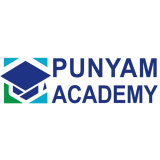This informal CPD article on Why organizations need ISO/IEC 27001 ISMS was provided by Punyam Academy, an industry leader in training of international compliance standards.
Today organizations deal with different kinds of information, including intellectual property, personal information, confidential information and other data in digital form on devices and cloud and in the form of paper documents.
Organizations, including those in private, government or non-profit sectors, are exposed to information security risks as cybercrime and data breaches have emerged as a big threat. Consequences of such threats can be as huge as total disruption of the organization and its reputation.
Therefore, in today’s scenario, information security is one of the prime concerns for organizations and many of them have chosen to implement an information security management system (ISMS) as the best way to secure their information and business. Implementation of ISMS in compliance with ISO/IEC 27001:2013 is a strategic decision for an organization, which aims to ensure total security of information from all kinds of threats.
What is the ISO/IEC 27001 ISMS Framework?
ISO/IEC 27001 ISMS is a framework that helps organization in improving their information systems cost effectively and enables them to manage, monitor, review and improve their information security practices. ISO/IEC 27001 ISMS documentation consists of policies, procedures and controls that are designed to preserve the confidentiality, integrity and availability of information by applying a risk management process and gives confidence to interested parties that risks are adequately managed. ISO 27001 ISMS can also preserve some other properties of information such as authenticity, accountability, non-repudiation and reliability of information.
ISO/IEC 27001 ISMS is based on the Plan-Do-Check-Act model. Organization should apply the PDCA to comply with the customer requirements and expectations regarding information security, develop plan and put it into practice, supervise implementation, and improve to make the system effective.
ISO/IEC 27001 ISMS Implementation
ISO/IEC 27001 provides only a basic framework of ISMS. For implementation of ISMS, first of all organizations need to prepare information security policy and objectives and define the scope and physical boundaries of the ISMS. This should be followed by a risk analysis and determining high risk areas.
Next, the organization should select measures for risk control and finally implement measures to control information security risks. The organization should also verify effectiveness of the measures taken. Consideration should be given to the potential effects of risk while formulating or reviewing information security policy and scope of the ISMS.
The establishment and implementation of an ISMS depends on a number of factors, such as the needs and objectives of the organization, security requirements, policies of the organization, the processes used and the size and structure of the organization. All of these influencing factors can change over time, and therefore, the organizations must continually improve the suitability, adequacy and effectiveness of the ISMS in order to continue to comply with ISO/IEC 27001 requirements.
The ISMS should be part of, and integrated with, the organization’s processes and overall management structure and information security should be considered in the design of processes, information systems, and controls. Initially an ISMS may consist of only few policies, procedures and controls and the implementation of the ISMS should be scaled up depending on the growing needs and security Information security risks of the organization.
Benefits of an ISMS to Organizations
Establishment and implementation of an ISMS complying with the requirements of ISO/IEC 27001: 2013 helps protect all forms of information. It ensures that information is accessible only to those authorized to have access and the accuracy and completeness of information and processing methods as well as assets are safeguarded against information security risks. The ISO 27001 ISMS also ensures that authorized users have access to information and associated assets when required.
A well-functioning ISO/IEC 27001: 2013 compliant ISMS provides confidence to the organization and its various stakeholders, and gives the benefits as listed below:
- Enables organization to address information security in a practical, cost-effective, realistic and comprehensive manner;
- Helps to demonstrate a high and appropriate standard of information security;
- Establishes mutual trust among networked organizations, clients and customers;
- Increases the ability of organization to manage and survive a disaster;
- Gives better control on information security system, which means more satisfied customers leading to increased business prospects and better market image;
- Helps mitigate the risk of data breaches, cyber security, etc.;
- Provides confidence to clients, suppliers, etc., that you have met the standard’s requirements;
- Ensures legal and regulatory compliance, such as compliance with GDPR.
In addition to the above, the ISO/IEC 27001 information security management system gives competitive advantage, as it helps to gain the trust of vendors, subcontractors, individual customers as well as government and regulatory bodies.
We hope this article was helpful. For more information from Punyam Academy, please visit their CPD Member Directory page. Alternatively please visit the CPD Industry Hubs for more CPD articles, courses and events relevant to your Continuing Professional Development requirements.













